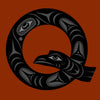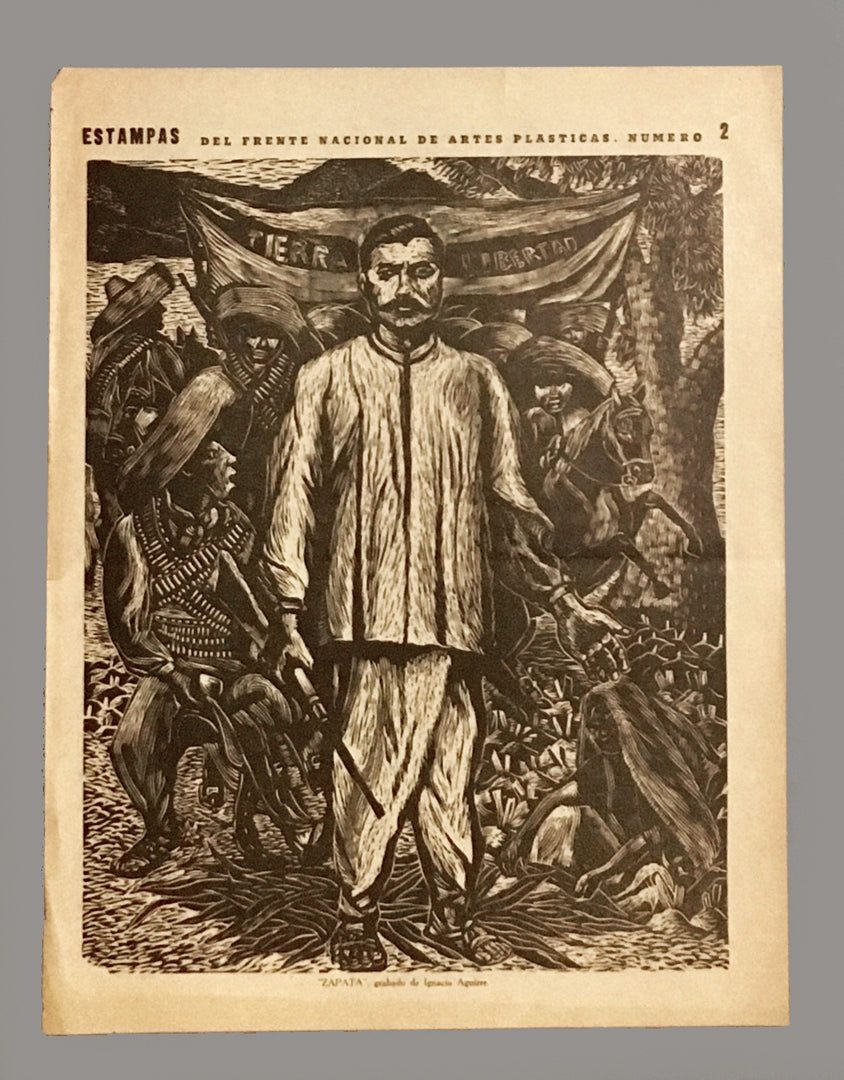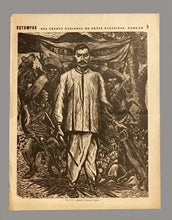Zapata, c. 1940 by Ignacio Aguirre (1900-1990)
Regular price
$1,200.00
Sale
Zapata, c. 1940
by Ignacio Aguirre (1900-1990), Mexico
etching on newspaper
13.75" h x 11" w paper size
22" h x 18.5" w framed
Conservation framing with an acid free linen mat, UV glass, and designer black wood frame
Provenance: From the series Estampas del Frente Nacional de Artes Plasticas: Numero dos. Collection of Jaled Muyaes (Chilean/Mexican, 1921-2007)
Ignacio Aguirre was born in the town of San Sebastián, Jalisco, a state in western Mexico where his family worked in the mining industry. He gained first-hand experience of the hardships of life in early twentieth-century Mexico through his work and his experiences of war.
For a short time in 1917 he was employed as a mineral sorter before finding work in the offices of a local store. From 1915 to 1917 he joined the revolutionary forces, fighting on the side of Venustiano Carranza against Pancho Villa. Carranza was President of Mexico during this period of the Revolution, and instrumental in the formation of the 1917 Constitution; Pancho Villa was a general in the Mexican Revolution, leading troops in northern Mexico and considered a bandit because he often stole land from the rich to give to the poor and hijacked trains. In 1920 he also fought in the Revolution against General Alvaro Obregón.
By 1921 Aguirre had left Jalisco for Mexico City where he worked for the government at the Ministry of Communications and the President's private office until 1929. During his time in Mexico City he avidly read about modern art, and from 1929 he shared a studio with the artists Rodríguez Lozano and Julio Castellanos.
In 1929 he visited Mexican villages through the Cultural Missions Programme, a state-organized initiative which sent artists around rural Mexico to produce public art such as mural paintings in order to disseminate the ideologies of the Mexican Revolution. He also became a drawing teacher in schools and was appointed Assistant Professor of drawing at UNAM (National Autonomous University of Mexico). He continued teaching throughout his career; from 1938 he took on a number of educational assignments, including teaching evening classes for workers.
From 1933 until 1936 Aguirre was a member of the LEAR and became involved with El Taller de Grafica Popular (TGP) in its early days. He regularly contributed to TGP exhibitions and publications until 1965 when he left the collective. In 1950 he participated in producing propaganda prints with the TGP for the film 'Memorias de un mexicano', a documentary about Mexican life and culture during the regime of Porfirio Díaz. He also worked on mural projects in the late 1930s, some on his own and others in collaboration with artists such as Pablo O'Higgins and Alfredo Zalce.
During the 1940s Aguirre showed his work in New York, and during the following decade he travelled to Eastern Europe and China to exhibit his work. In 1968 he became a member of the editorial team for the publishing house Nuestro Tiempo, and in 1976 he was appointed co-editor of the newspaper 'Estrategía'. Aguirre was married to the American dancer Anna Sokolow until his death in 1990.
